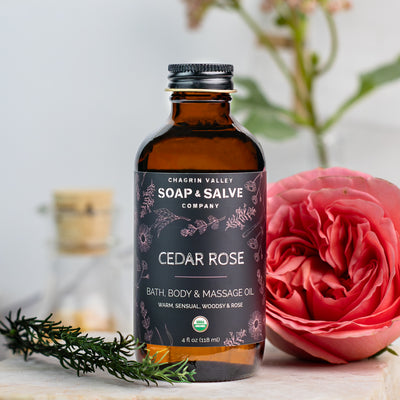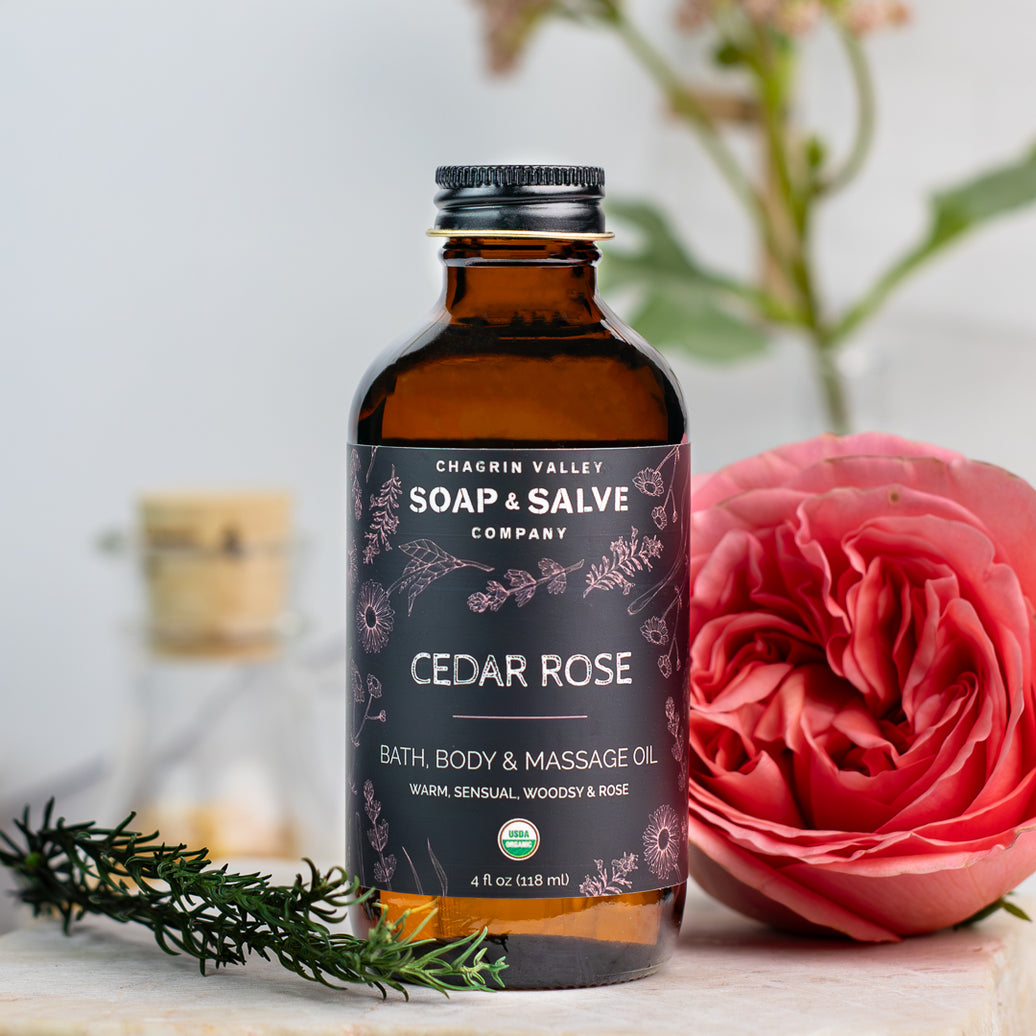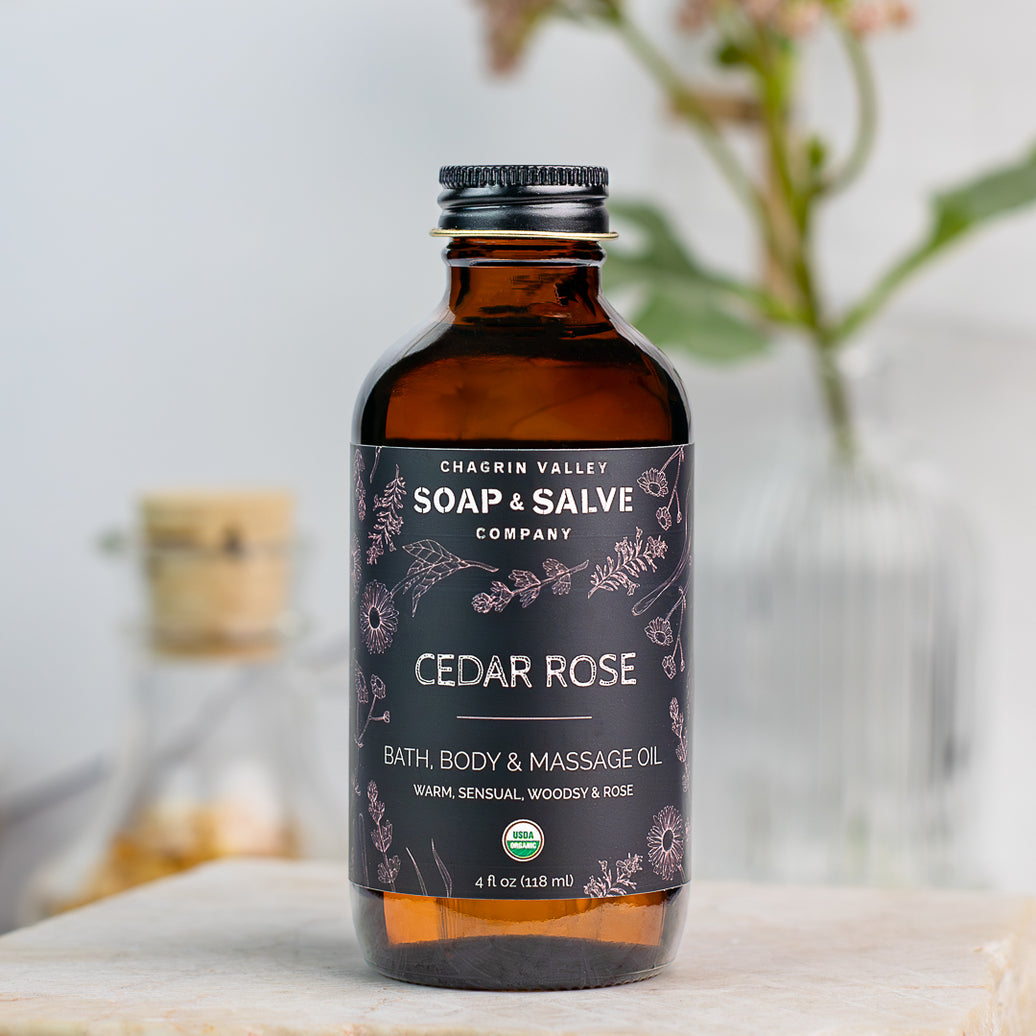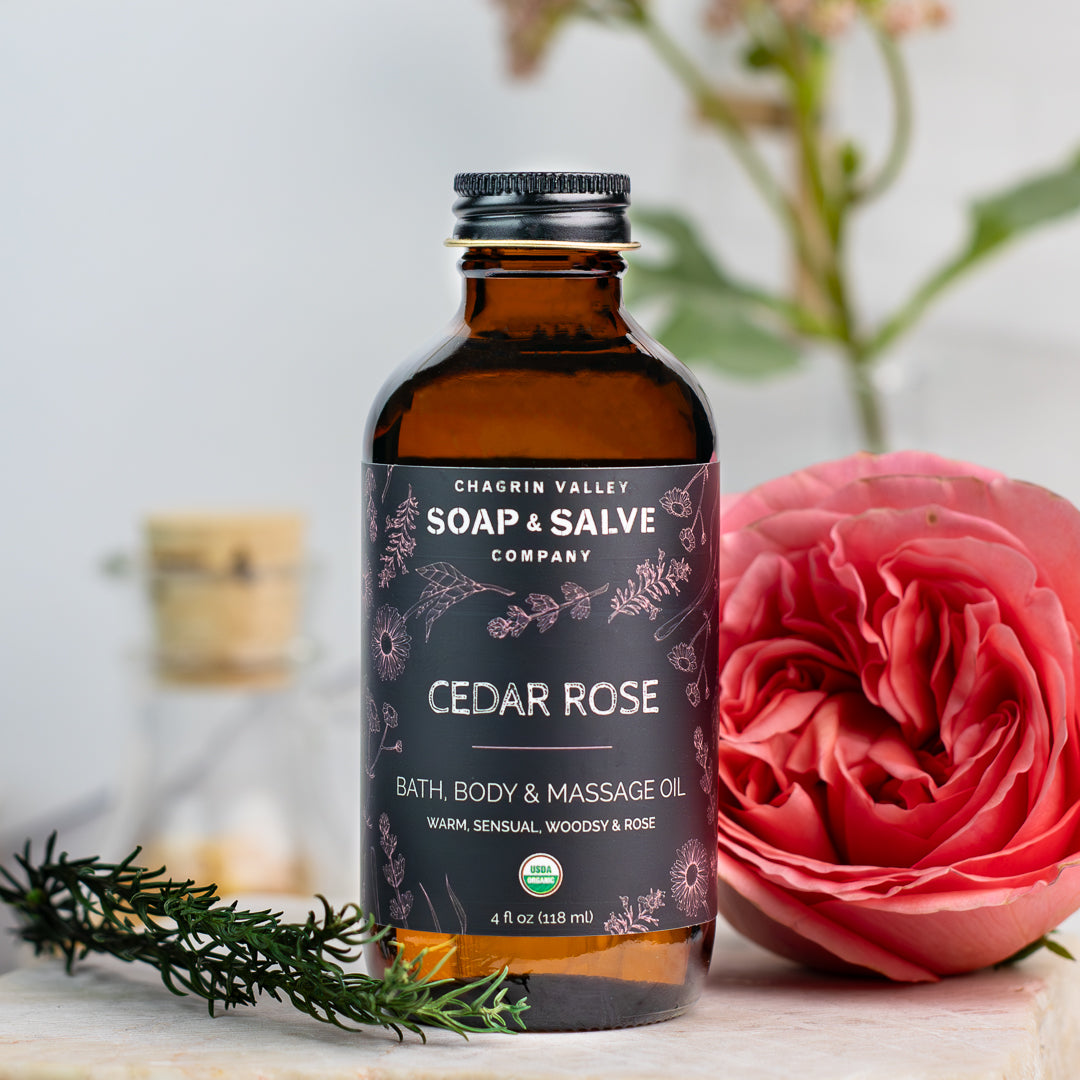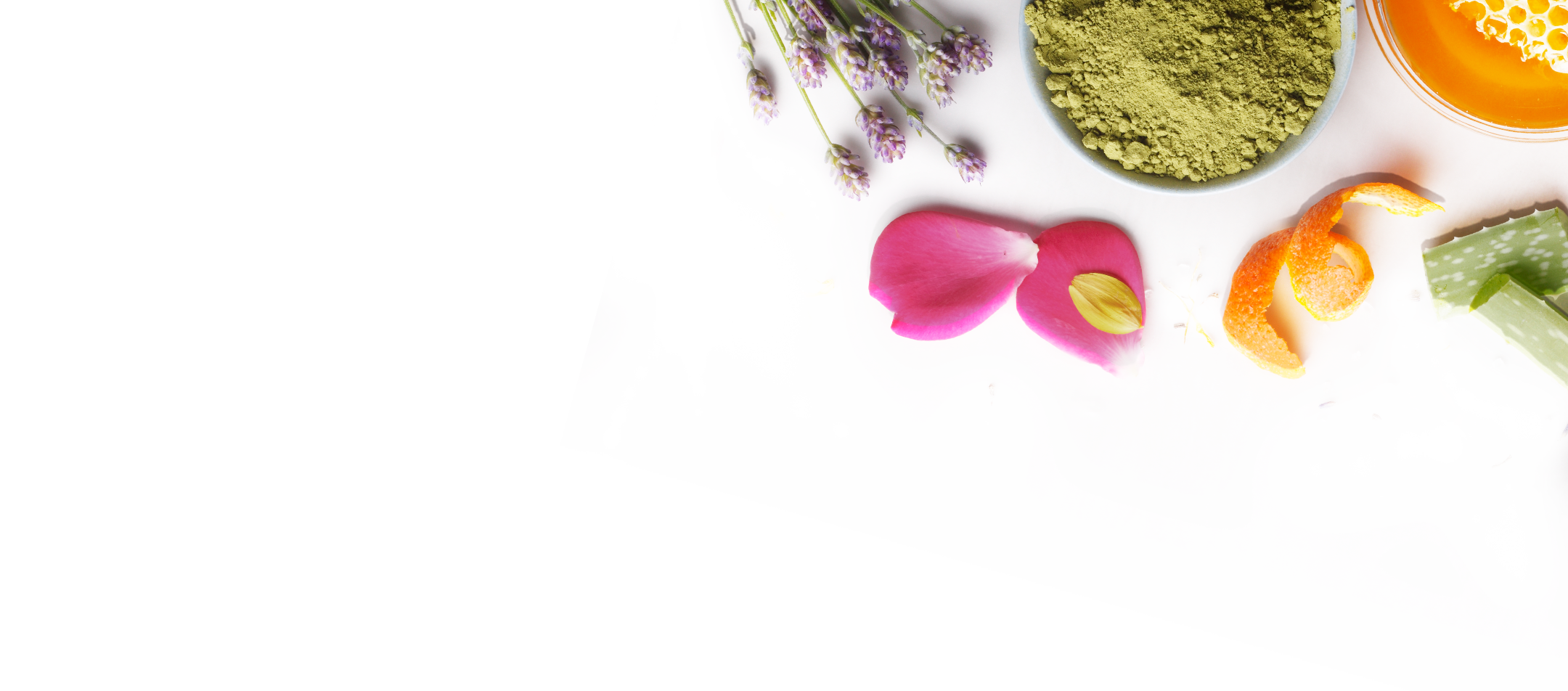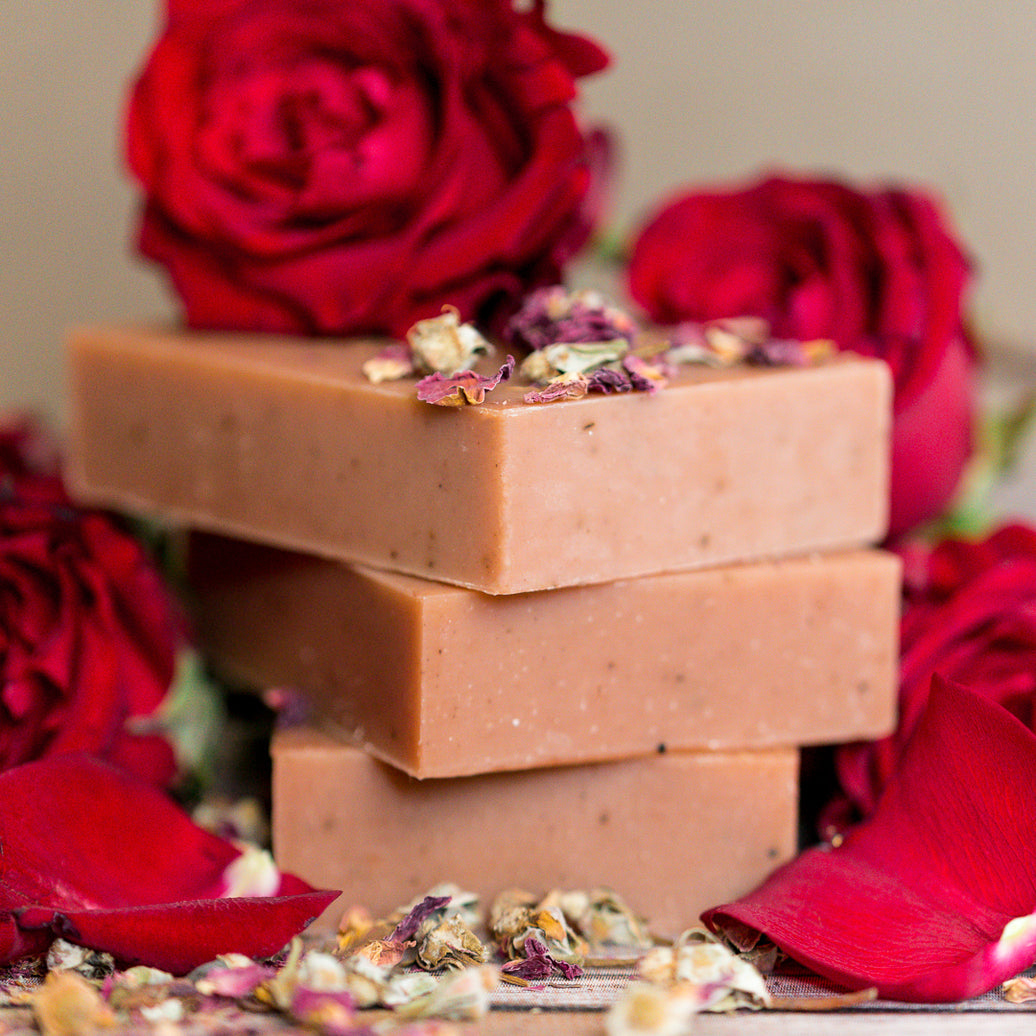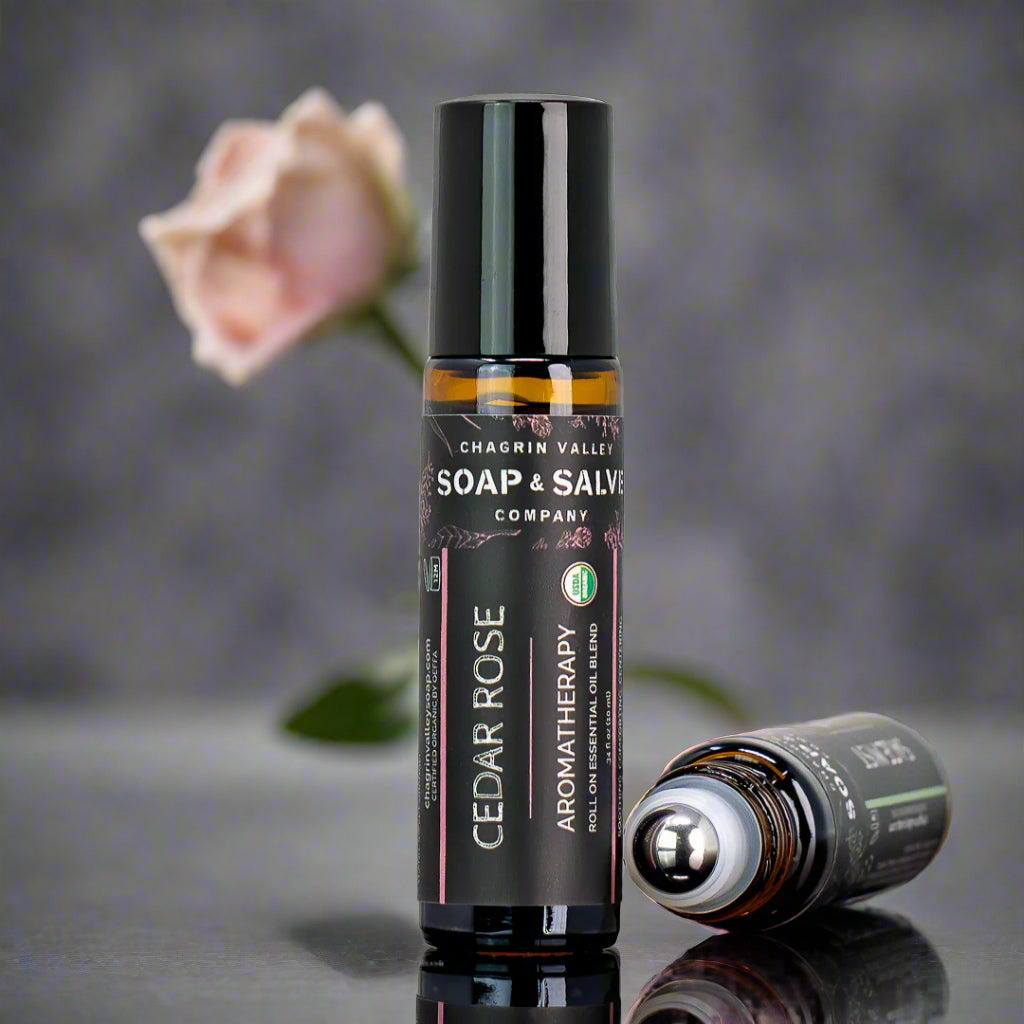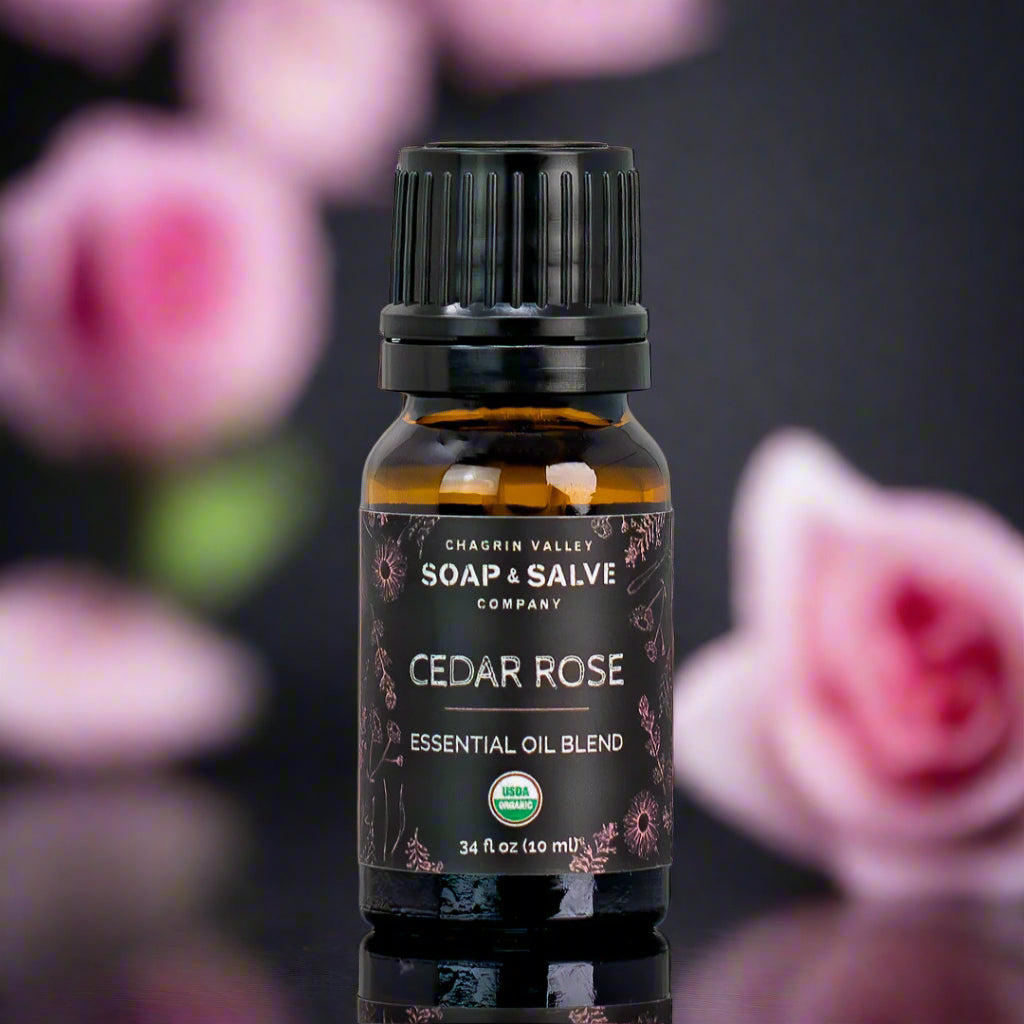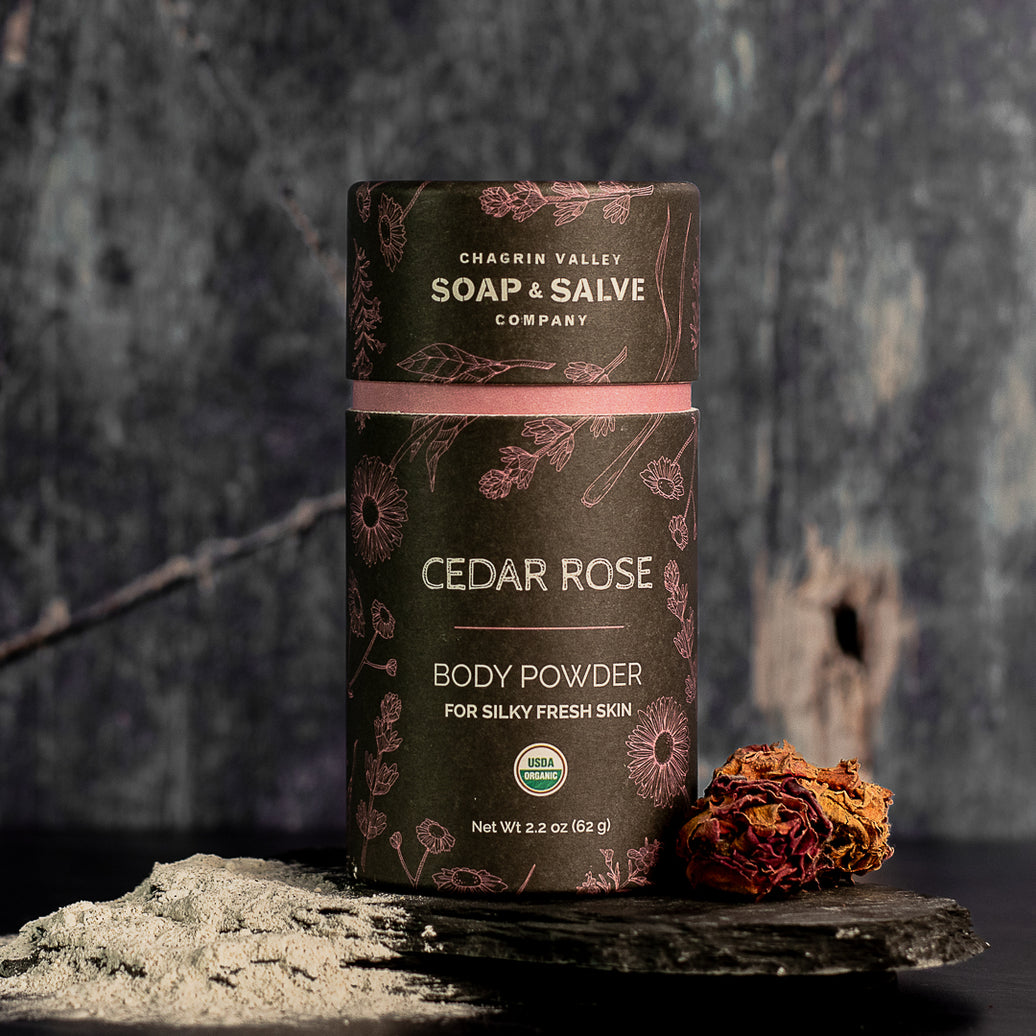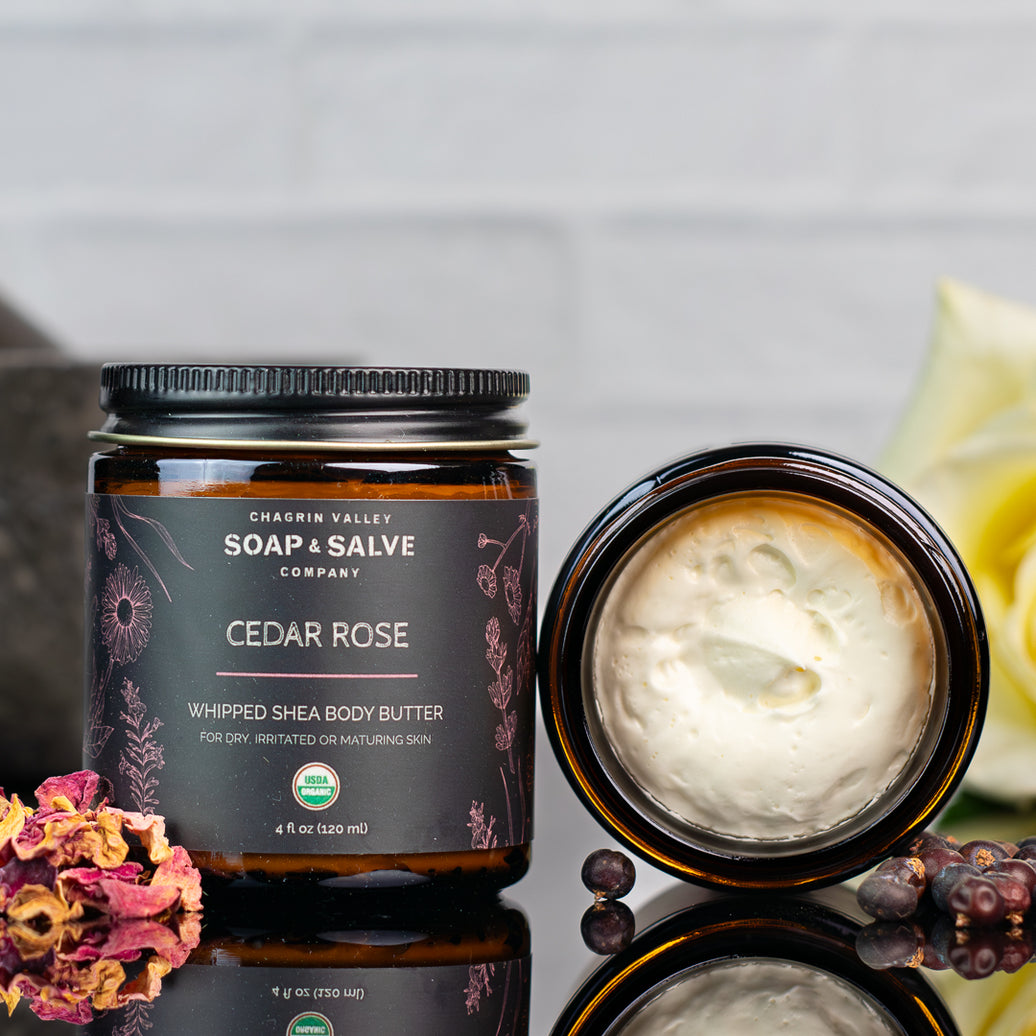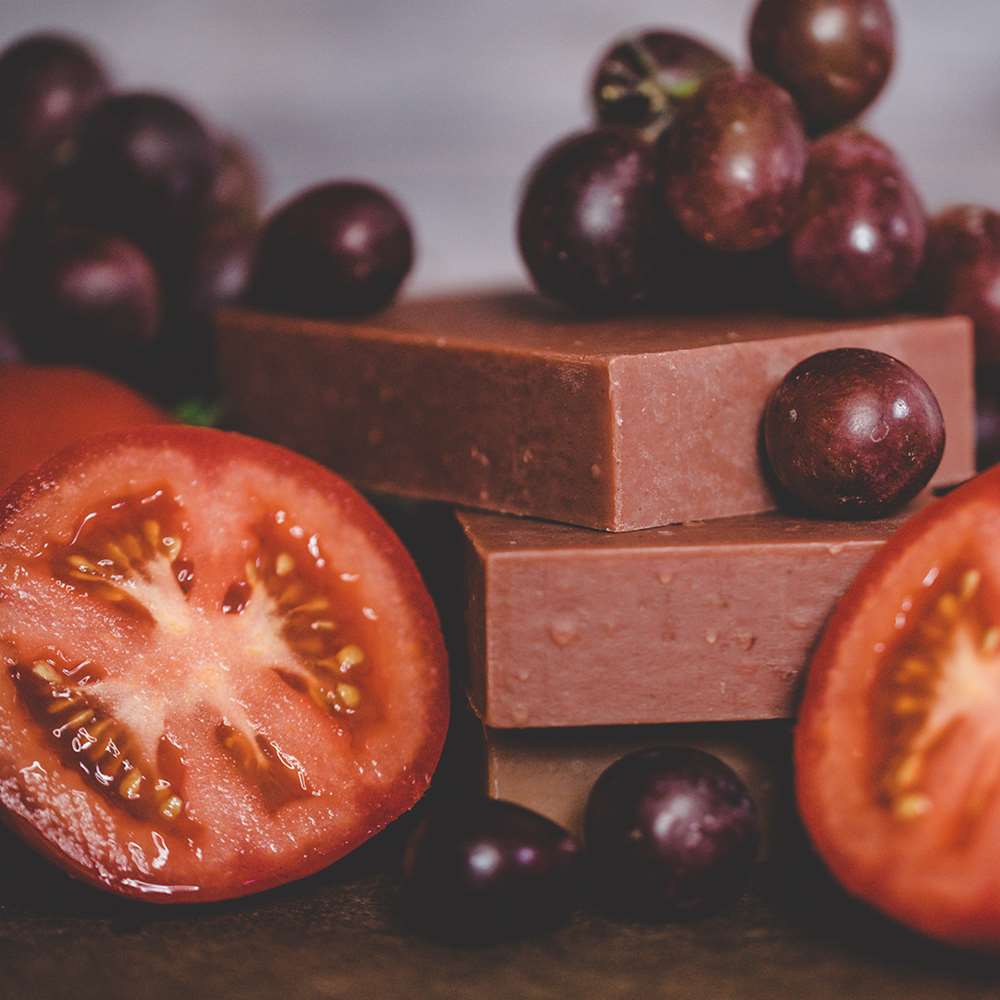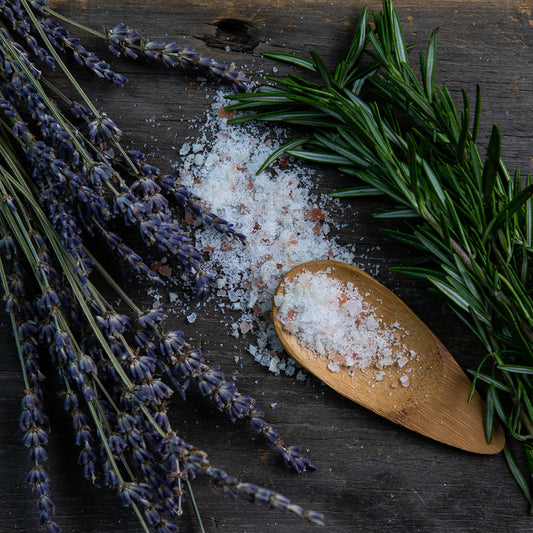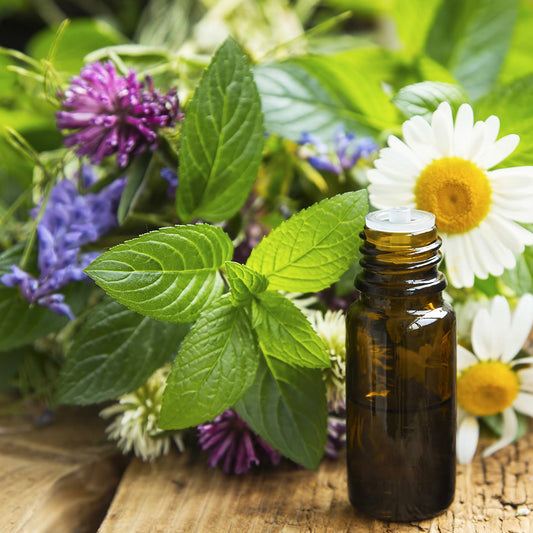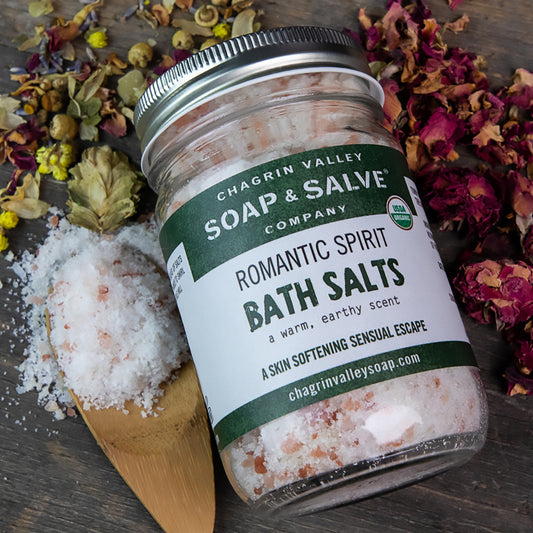
Aceite para baño y cuerpo: Cedar Rose
Aceite para baño y cuerpo: Cedar Rose
Regálate unos momentos de pura serenidad con un aceite corporal y de baño que suaviza la piel. Notas de cedro y rosa se combinan armoniosamente en un aroma cautivador que ayuda a estabilizar y equilibrar las emociones, animar el espíritu, estimular sentimientos positivos y promover la claridad mental.
- Out Of Stock






Product Overview
Are you looking for warmth and comfort?
Have you spent most of your day taking care of everyone else? Now it is time to pamper yourself! Treat yourself to a few moments of pure serenity with this unique blend of organic oils, skin-loving botanicals, and essential oils that combined with the beneficial effects of a warm bath or massage help calm the mind and relax the body.
Whether you massage it directly on your skin, add it to a warm bath or use it in your shower, our enchanting Cedar Rose essential oil blend harmoniously combines notes of cedarwood and rose into a nurturing and captivating aroma to help ground and balance emotions, lift the spirit, stimulate positive feelings and promote mental clarity.
Moisturizing Oils
- Nutrient-rich Organic Sunflower Seed Oil is an easily absorbed, light, and highly moisturizing oil that helps soothe irritated skin conditions, promotes smoother skin, and is good for all skin types.
- A rich source of fatty acids, Organic Unrefined Evening Primrose Oil is a soothing, moisturizing, and nourishing oil, especially for a massage that helps ease irritated skin conditions like eczema and is exceptional for dry, aging skin.
- One of nature's most effective natural moisturizers, Organic Jojoba Oil is a natural liquid wax with a chemical structure similar to that of our natural skin oil and is a good choice for all skin types. Its anti-inflammatory properties help ease irritated skin conditions like eczema and psoriasis.
- Moisturizing Organic Unrefined Sweet Almond Oil, a soothing, lightweight oil, is easily absorbed leaving the skin soft and smooth. This slippery oil is popular for massage since it allows hands to glide easily over the skin.
Each of the infused organic botanicals adds its own unique properties to this relaxing oil. For more information on each botanical, click on the name in the ingredients list!
Essential Oils
- Aromatherapy: The floral and woodsy scent of Lavender creates a serene and relaxing atmosphere that promotes a restful night’s sleep or stress relief at any time. Skin Care: Lavender oil can help ease, soothe and promote the healing of irritated skin conditions. It is useful for acne, oily skin, burns, sunburn, eczema, psoriasis, and insect bites.
- Aromatherapy: The calming and uplifting aroma of Palmarosa is a soft, rose and geranium-like scent that helps balance the emotions, ease stress and relax the mind. Skin Care: Palmarosa, good for both dry and oily complexions, hydrates, and helps improve the appearance of dull, listless skin. The anti-inflammatory properties may help ease irritated skin conditions.
- Aromatherapy: The penetrating aroma of Ylang Ylang promotes relaxation, calms anxiety, helps improves mood, and stimulates positive feelings. Skin Care: Ylang Ylang is a balancing oil good for all skin types. Its antiseptic properties make it helpful for acne-prone skin.
- Aromatherapy: The uplifting scent of Sweet Orange brightens and warms your mood, calms, clears the mind, and reduces stress. Skin Care: Sweet Orange helps stimulate microcirculation to improve the appearance of dull skin. It balances skin oil production to help oily and acne-prone skin.
Use this enchanting organic natural body oil as a bath oil, an all-over body massage, or an after-shower moisturizer to lavish your skin with love.
- All Natural, Certified Organic, Vegan, Cruelty-Free, Non-GMO
- Aromatherapeutic essential oil blend helps relieve tension with its soothing, calming, and harmonizing effect on the nerves
- Moisturizing oils and botanicals nourish skin, leaving it feeling silky smooth, soft, and radiant
- A spot treatment for stress--massage into temples or other pulse points for a blissful treat
For a moisturizing after-shower treat, add a sprayer available on our Accessories page!
While body lotions may contain some moisturizing ingredients, they are mostly made of water (notice the first ingredient listed). Our body oils can be used from head to toe instead of lotion.
If you enjoy the application "feeling" of a lotion, try massaging our body oil into warm, damp skin right after a bath or shower. Wait a few moments and gently pat dry. (Do not rub the skin dry!)
How To Use
Simply put, a body oil is an oil used to soothe, nourish, and hydrate the skin on the body. But as you read more about how to use it, you will realize that a natural body oil is one the most versatile products you can include in your skin care arsenal.
As a Bath Oil
For a skin-softening fragrant bathing experience you can make any bath time feel like a day at the spa by adding a bath oil to your warm bath. Soaking in warm water helps make the skin more pliable and opens the pores by loosening the dirt and debris which is easily washed away.
A warm water bath also helps skin better absorb moisture, helps relax your body and mind, ease stress, calm the soul, balance emotions, arouse your senses, relieve fatigue and soothe sore muscles.
Bathtub sizes vary, but we usually recommend adding 1 to 2 tablespoon of oil to warm bath water. Then slide into the tub, relax and allow the oils work their magic. Be careful because the oils can make the bath slippery.
Some suggestions from our bath-loving customers and family:
- Add the oils while water is still running in order to distribute the product more evenly.
- Run the bath first and add the oil to the still water, creating a little puddle of aromatic oil to slide into. You can then rub some bath oil into your skin.
- Rather than placing the oil in the tub, pour a bit into your hands and massage it gently onto the skin before getting into the tub. Focus on areas that may need extra care, such as dry elbows and knees.
- If using an aromatherapy bath oil be sure to take some deep breaths in order to reap the benefits from the essential oils.
- After a bath remember to pat (not rub) the skin dry.
A bath before bed is one of most effective ways to slow down your mind and unwind. Soaking in warm scented water helps muscles release tension. When you step out of your oil-infused bath, you will notice a difference in your skin, your body and your mind. If your skin is very dry or irritated, pat your skin dry a bit and follow up your bath with a light massage of oil on damp skin.
Herbal bath oils are perfect all on their own but anytime you prepare a bath you can combine bath oils with other great skincare products like our Simply Salt Bath Salt or Bathing Herbs.
For The Shower
No time to bathe or don't have a bath tub? No worries! A body oil can be used before your shower, in your shower, or after your shower. Always be cautious of slippery shower tubs!
Before the Shower: If you suffer from very dry or irritated skin, pour a bit of oil into your hands and massage it gently into the skin. Allow it to sink in a minute or two before stepping into the shower. Focus on areas that may need extra care, such as dry elbows and knees. Cleanse your body as normal.
The oil creates a barrier between your skin, the water, and the soap to help mitigate some of the moisture loss. If using an aromatherapy oil, cup your hands, bring them close to your face and take a deep breath in and out before stepping into the shower. If desired you can follow up with a bit of oil after your shower.
In the Shower: Apply the body oil right in the shower as the last step in your routine. For ease of use, I suggest placing some bath oil into a spray or squirt bottle. After cleansing your skin, squirt a bit of oil into your hands or spray it directly on your body. Massage it gently into the skin. Allow the oil to sink in a minute or two. You can then give your body a quick rinse or just step out of the shower. Pat skin dry.
After the Shower: One of the most common and highly recommended ways to use a body oil (or any moisturizer) is to apply it immediately after a shower or bath. Since our skin absorbs some water during a shower, it is important to take advantage of the small window of opportunity after cleansing, about 15 minutes, to seal that moisture into the skin.
Simply put a few drops in the palm of your hand (a little goes a long way), rub your hands together to warm the oil, and massage it into your warm, damp skin. Allow a minute for the oils to penetrate. Gently pat skin dry so as not to rub off the moisturizing oils.
As a Body Oil
Technically all of the methods discussed in this blog are ways to use a natural oil on your body. While typically the best time to apply body oil is when the skin is warm and slightly damp, you can apply body oil at any time of the day to add a targeted boost of hydration to the skin whenever needed.
Give those extra dry places, like dry elbow, heels, and knees a bit of extra TLC by massaging in a few drops of body oil on dried skin.
When applying body oil to dried skin, some people like to mist skin with a bit of warm water and then apply the oil. You can also moisten your hands.
As a Massage Oil
I cannot say enough about the benefits of massage. Massage can boost circulation, ease away tension, and works wonders on sore or tired muscles. If using an aromatherapy body oil you will experience the benefits of both topical and inhalation aromatherapy.
Whether you are massaging yourself or someone else, pour a small amount of oil into clean hands and allow it to warm up between your palms. You can also place the bottle in some warm water before dispensing.
Massage into skin using long, slow, gentle movements in circular pattern. Take a few deep breaths as you apply the oils and feel the tension slip away.
A warm massage oil feels amazing.
- a warm massage oil containing essential oils will have an increased rate of penetration of those oils most likely due to the increased blood flow caused by an increase in temperature
- massaging the area where the oil is to be applied can boost circulation and increase absorption
Even More Ways To Use a Bath & Body Oil
- Apply body oil before you shave anywhere. It protects the skin against razor burn and allows for a closer, smoother shave.
- Use a moisturizer after you shave.
- If using body oils scented with pure essential oils, take advantage of their aromatherapeutic healing powers. Special blends can ease stress, relieve headache, help with mind and body fatigue and much more. Rub a drop of aromatherapeutic oil on your temples, neck or other pulse points. Place some on your wrist to use as a "sniffing" spot.
- Use a few drops to revive and smooth dry or frizzy hair.
When using in bath or shower, always take care as your bath may become slippery.
If you have very sensitive skin or are simply trying a new product for the first time, we always recommend doing a patch test.
For external use only. Discontinue use if irritation occurs. Best if used within 6 months of opening.
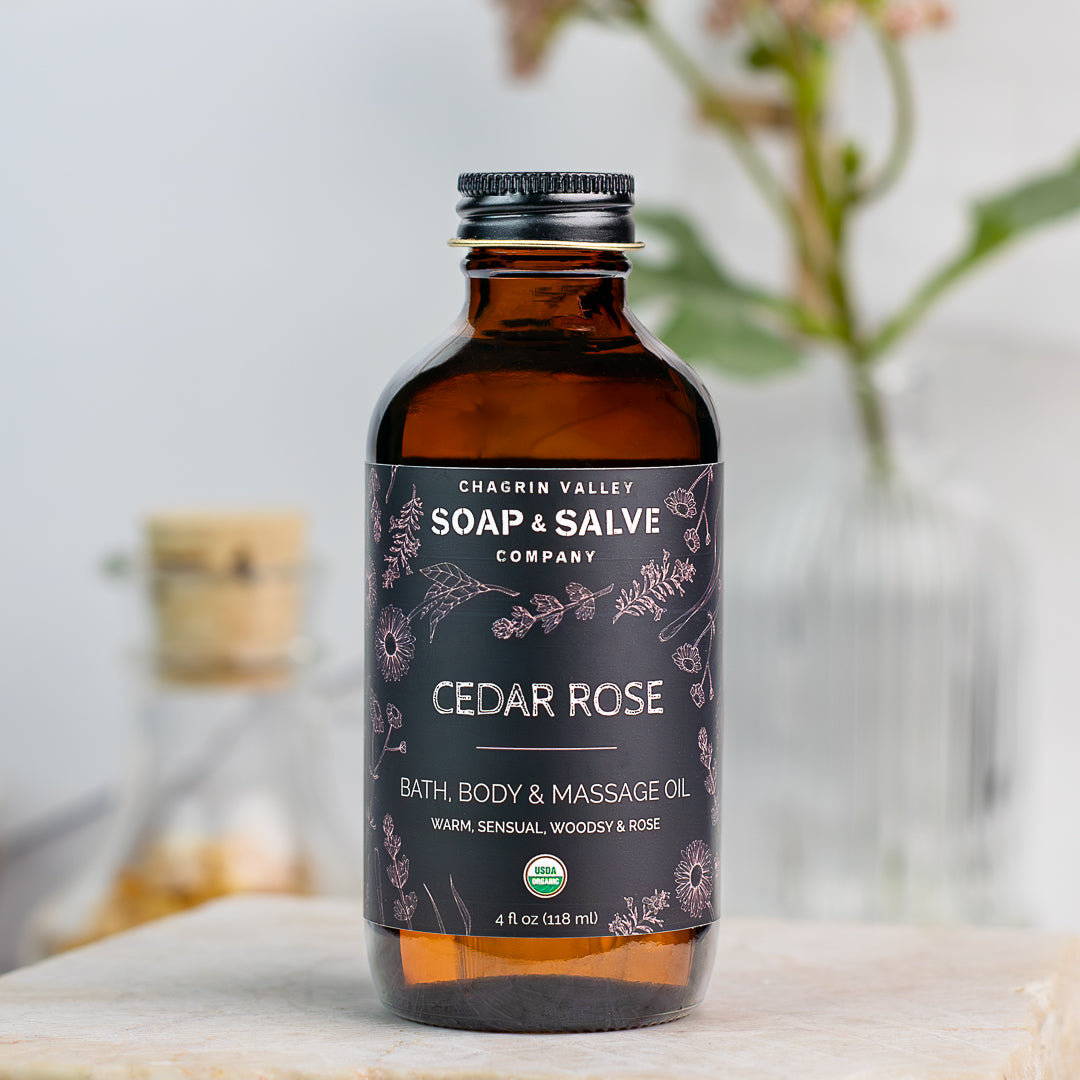
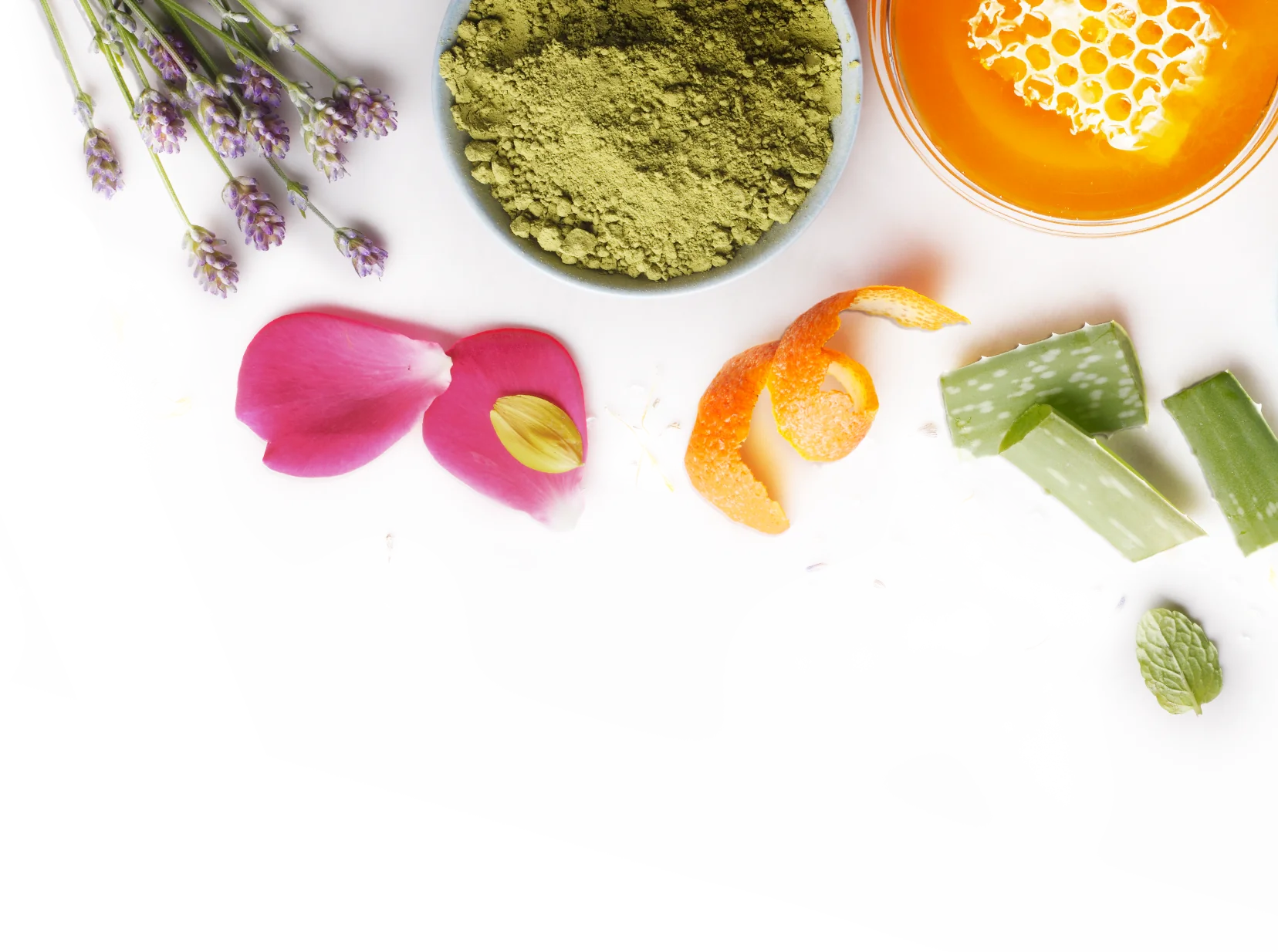
Ingredientes eficaces que te hacen sentir bien
El objetivo es simple: ¡aprovechar el poder y la simplicidad de la Naturaleza® para limpiar, calmar, sanar y proteger tu piel y cabello!
Nuestras fórmulas únicas se basan en aceites y mantecas hidratantes, ingredientes botánicos curativos y aceites esenciales puros. Seleccionamos cada ingrediente con un único objetivo: ¡el MEJOR cuidado natural de la piel para TI!
Ingredientes destacados


Organic Aceite esencial de palmarosa
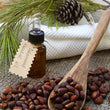
Organic Aceite esencial de cedro
All Ingredients:
Organic Sunflower Oil infused with Organic Botanicals Lavender and Rose Petals
Preguntas frecuentes
¿Qué son los aceites esenciales?
¿Qué son los aceites esenciales puros?
¿Alguna vez has disfrutado del aroma de una flor o hierba aromática? La fragancia proviene de potentes compuestos aromáticos llamados aceites esenciales, presentes en las flores, tallos, semillas, corteza, raíces, frutos y otras partes de las plantas. A menudo se necesitan varios kilos de planta para producir una sola botella de aceite esencial.
Los aceites esenciales no sólo dan a las plantas sus aromas únicos, sino que también ayudan a atraer a los polinizadores y a protegerlas de los insectos y otros depredadores.
La composición química de los aceites esenciales puede proporcionar valiosos beneficios aromaterapéuticos físicos y psicológicos para algunas personas.
Es importante tener en cuenta que, para ser un verdadero aceite esencial, debe aislarse de la planta únicamente por medios físicos. Los aceites esenciales nunca se extraen con disolventes.
Aunque las fragancias sintéticas o aceites “idénticos a los naturales” están disponibles a un costo mucho menor, solo los aceites esenciales de plantas naturales proporcionarán beneficios aromaterapéuticos.

¿Qué son los aceites esenciales ? (Mucho más detalle)
Cómo se extraen los aceites esenciales
¿Por qué utilizamos sólo aceites esenciales de plantas reales?
Si está embarazada o bajo cuidado médico por alguna condición médica, consulte con su proveedor de atención médica antes de usar aceites esenciales.
Embarazo y niños: No proporcionamos información sobre la seguridad de los aceites esenciales durante el embarazo ni para su uso en niños debido a que la información disponible es muy ambigua y, a menudo, contradictoria. Si le interesa usar aceites esenciales durante el embarazo o con niños pequeños, investigue por su cuenta y consulte a su médico, matrona o profesional de la salud antes de usarlos.
View Answer Page
¿Los ingredientes y productos de Chagrin Valley están certificados como orgánicos por el USDA?
Chagrin Valley Soap & Salve es una empresa orgánica certificada por el USDA

La consideración más importante en cualquier negocio son sus clientes. El mundo actual, plagado de afirmaciones engañosas, publicidad engañosa y simple engaño, a menudo deja a los consumidores intentando descubrir la verdad sobre los productos personales y sus ingredientes.
- Queremos que nuestros clientes sepan que estamos comprometidos con la transparencia en todo lo que hacemos.
- Queremos que nuestros clientes sepan que cuando decimos “ orgánico”, lo decimos en serio.
- Creemos que al convertirnos en una empresa orgánica certificada por el USDA, nuestros clientes no tienen que preguntarse si realmente utilizamos ingredientes orgánicos certificados o si nuestros productos orgánicos son verdaderamente orgánicos.
- Por eso elegimos ser una empresa orgánica certificada y cumplir con los estrictos estándares requeridos para la certificación orgánica.
Algunos de mis productos favoritos están elaborados con ingredientes que simplemente no cuentan con certificación orgánica. ¿Por qué? Actualmente no existen estándares para los ingredientes utilizados específicamente en la industria de productos de cuidado personal. La certificación orgánica de productos de cuidado personal se basa en los estándares de alimentos orgánicos establecidos por el Programa Nacional Orgánico del USDA.
Pero como somos una empresa orgánica certificada, estamos obligados a presentar documentación que acredite que incluso nuestros "ingredientes no orgánicos" se produjeron sin el uso de pesticidas tóxicos, organismos genéticamente modificados (OGM), lodos de depuradora o irradiación.

¿Por qué nos convertimos en una empresa orgánica certificada?
¿Qué significan todas las etiquetas orgánicas?
View Answer Page
¿Tienen fecha de caducidad sus barras de jabón y champú naturales?
La respuesta corta
¡Sí y no!
Aunque los jabones naturales hechos a mano suelen mejorar con el tiempo, recomendamos usarlos dentro de los 12 meses posteriores a su compra. Nuestros jabones perfumados deben usarse dentro de los 3 meses posteriores a su extracción de la caja.
Aunque los jabones no se "estropearán" después de ese tiempo, es posible que notes algunos cambios a medida que el jabón natural envejece.
- Algunos colores naturales pueden desvanecerse con el tiempo.
- Los aromas de aceites esenciales naturales puros se desvanecerán con el tiempo.
Los cambios de color y aroma ocurren aún más rápido en nuestras barras de tamaño de muestra .
Estas pequeñas pastillas de jabón natural tienen una relación superficie-volumen mucho mayor, lo que permite que los aceites esenciales se evaporen más rápidamente. Sin embargo, el aroma puede permanecer presente al enjabonarse.
Encontré unas pastillas antiguas escondidas en mi armario. El aroma había desaparecido, ¡pero la espuma era increíble!
La respuesta larga
Para una discusión más detallada, lea nuestro blog, "La vida útil, el color y el aroma de un jabón totalmente natural".
Cómo puedes ayudar a prolongar la vida útil
-
Los jabones naturales necesitan respirar. La exposición al aire favorece su endurecimiento y contribuye a una mayor durabilidad. El jabón debe conservarse sin envolver en sus cajas o envuelto con materiales transpirables. Los envoltorios ajustados generan humedad al impedir la evaporación.
- ¡Nuestros jabones se envasan en envases transpirables, reciclables y sostenibles! Conserve sus jabones naturales hechos a mano en un lugar seco y fresco, alejado de la luz solar, el calor excesivo y la humedad.
- Nuestros jabones perfumados, como el de lavanda y romero, se pueden colocar en una bolsa de muselina, en un calcetín viejo y limpio, o envolver en un trozo de tela y guardar en el armario de ropa blanca o en el cajón de la cómoda para dar una fragancia encantadora a su ropa de cama y ropa mientras espera a ser utilizada.
View Answer Page
¿Qué significan los diferentes símbolos orgánicos?
Utilizamos dos símbolos orgánicos diferentes en nuestro sitio web.
¡Cada símbolo tiene una definición única!
Etiquetas orgánicas
El etiquetado de "certificado orgánico" fue desarrollado por el USDA y se refiere a las afirmaciones y al etiquetado de productos orgánicos en alimentos y productos de cuidado personal en Estados Unidos. El USDA tiene directrices muy estrictas sobre el porcentaje de ingredientes orgánicos necesario para obtener la certificación. Otros países tienen sus propios procedimientos, requisitos y estándares de certificación. Los criterios de etiquetado y los ingredientes permitidos difieren de los de EE. UU.
 La etiqueta del logotipo orgánico del USDA se puede utilizar en productos que cumplen con los estándares de los dos primeros niveles del sistema de etiquetado orgánico en el que entre el 95 y el 100 % de los ingredientes están certificados como orgánicos.
La etiqueta del logotipo orgánico del USDA se puede utilizar en productos que cumplen con los estándares de los dos primeros niveles del sistema de etiquetado orgánico en el que entre el 95 y el 100 % de los ingredientes están certificados como orgánicos.
¡La mayoría de nuestros productos sin jabón entran en esta categoría y muestran el logotipo del USDA!
 En nuestra empresa utilizamos el sello de producto orgánico certificado por OEFFA por dos motivos...
En nuestra empresa utilizamos el sello de producto orgánico certificado por OEFFA por dos motivos...
Jabones y champús: Estos productos contienen al menos un 8% de hidróxido de sodio debido al proceso de elaboración . Nuestro jabón "orgánico" contiene entre un 87% y un 92% de ingredientes orgánicos, pero el estándar del USDA establece que un producto debe estar elaborado con un 95%-100% de ingredientes orgánicos para ostentar el sello de "Certificación Orgánica del USDA" (ver arriba). Tampoco se nos permite usar la palabra "jabón orgánico" en la etiqueta.
Ingredientes recolectados de forma silvestre: cuando se utiliza cualquier ingrediente agrícola (cualquier ingrediente que tenga un origen biológico) que no esté certificado como orgánico, se aplican las mismas reglas de etiquetado que usamos para el jabón.
Las normas del USDA para el etiquetado adecuado establecen que los productos pueden llevar el logotipo del agente certificador, pero no el logotipo orgánico del USDA. Nuestra agencia certificadora del USDA es la OEFFA (Asociación de Alimentos y Granjas Ecológicas de Ohio) . Su logotipo aparece en nuestros jabones y champús "orgánicos".
¿Por qué algunas empresas de jabón usan la palabra "orgánico" en sus etiquetas, aunque sea ilegal? ¡Haga clic aquí para leer más sobre las normas para el etiquetado orgánico de jabones!
Etiquetas no oficiales
En ocasiones, utilizamos un símbolo no oficial para productos elaborados con ingredientes "naturales" que no cumplen con los criterios de ninguna de las etiquetas mencionadas anteriormente. Es posible que vea este tipo de símbolo en productos como los jabones para pies de arcilla negra del Mar Muerto, carbón de bambú y lufa pómez, y nuestras barras de champú de barro y arcilla y carbón con romero y menta.
La certificación orgánica se basa en estándares de agricultura y ganadería orgánica. Por lo tanto, la lista de ingredientes no agrícolas permitidos (como arcilla, sal, lodo, etc.) se basa en las materias primas utilizadas en la agricultura o la producción de alimentos. Lamentablemente, ingredientes como algunas arcillas, piedra pómez, lodo del Mar Muerto y carbón de bambú no se utilizan en la agricultura ni en la producción de alimentos y, por lo tanto, no aparecen en la lista.
Aunque parezca larga, esta es en realidad una descripción muy breve. Para obtener información más detallada, lea " ¿Qué significan todas las etiquetas orgánicas? ".
View Answer Page
